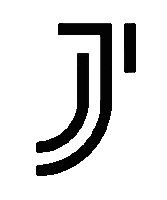Balancing Work and Life: Avoiding Burnout in Professional Careers in 2025

The 2025 Burnout Crisis: Why It’s Worse Than Ever
- Global Burnout Rate: 74% of professionals report chronic stress (WHO, 2024)
- Economic Toll: $2.2T lost annually to burnout-related productivity decline (Gallup)
- The AI Paradox: 68% feel pressured to “compete with machines” by working longer hours
- Hybrid Work Trap: Remote employees work 2.3 extra hours daily (Stanford)
2025’s Top Burnout Accelerators
- Always-On Culture: 57% check work messages within 15 mins of waking (Microsoft)
- Climate Anxiety: 42% report eco-grief affecting work focus (Yale Climate Survey)
- Skills Obsolescence Fear: 70% spend nights upskilling to avoid replacement
- Meeting Inflation: Avg. professional attends 12.7 meetings/week (up 37% since 2022)
Decoding Burnout: The 2025 Spectrum
(Beyond the Maslach Burnout Inventory)
| Stage | Physical Signs | Cognitive Markers | Emotional Signals |
|---|---|---|---|
| Early | Eye strain, caffeine reliance | “Sunday Scaries,” task paralysis | Irritability in trivial talks |
| Active | Chronic fatigue, gut issues | Imposter syndrome spikes | Detachment from colleagues |
| Crisis | Migraines, autoimmune flares | Working memory failures | Emotional numbness |
The Cortisol Test: Hair sample analysis now detects burnout risk 3–6 months before symptoms (Swiss labs offer €150 tests).
Corporate Strategies: How Forward-Thinking Companies Fight Burnout in 2025
1. Regulatory Shields
- EU’s “Right to Disconnect” Law: Fines up to €100K for after-hours messaging (France/Germany)
- Mandatory “AI Sabbaticals”: 4 weeks/year unplugged for algorithm-facing roles (California mandate)
- Productivity Paranoia Bans: Employee surveillance capped at 15 mins/day (UK’s 2025 Employment Act)
2. Neuroscience-Backed Interventions
- Circadian Syncing:
- Light-controlled offices that adjust melatonin-boosting wavelengths
- Core hours limited to 10 AM–3 PM chronotype sweet spot
- Neurofeedback Pods: Real-time EEG monitors triggering 10-min breaks when focus dips
3. The “Regenerative Workplace” Framework
*Example: Siemens reduced burnout by 41% after installing forest-therapy booths and banning meetings on Wednesdays.*
Personal Burnout Toolkit: Evidence-Based Tactics for 2025
1. Time Sovereignty Systems
- AI Time-Blocking: Tools like Reclaim.ai auto-protect 2-hour deep work blocks
- Meeting Bankruptcy: Declare “default: decline” with auto-reply: “I optimize for asynchronous work. Send agenda/outcome needs.”
- Commute Reclamation: Convert saved commute time to “growth hours” using the 30/30/30 Rule:
- 30 mins learning
- 30 mins movement
- 30 mins connection
2. Neurological Reset Protocols
- Ultradian Rhythm Alignment: Work in 90-min sprints followed by:
- NSDR (Non-Sleep Deep Rest): 10-min Yoga Nidra sessions
- Tactical Breathing: 4-7-8 method to lower cortisol
- Digital Fasting: Blue-light blocking glasses + “dumbphone Mondays”
3. Purpose Fortification
- Impact Mapping: Use this template to combat meaninglessness:My TaskWho BenefitsImpact HorizonBudget reportClean water project funding5,000 lives by 2030
- Micro-Volunteering: Skill-based platforms like Catchafire integrate with work calendars
The 2025 Burnout-Proof Career Pivot
High-Sustainability Roles
| Field | Burnout Score* | Growth | Avg. Hours |
|---|---|---|---|
| Forest Therapy Guide | 9.2/10 | +142% | 32/week |
| Corporate Rest Officer | 8.7/10 | +89% | 35/week |
| AI Ethics Auditor | 8.1/10 | +67% | 38/week |
| *Avg. Tech Role: 3.4/10 | 52/week |
**Based on WHO Wellbeing Index, 2025*
Transition Tactics
- Stealth Upskilling: Learn during work hours using “growth wrappers”:“Completing sustainability cert will enhance my supply chain decarbonization work.”
- Output Negotiation: Trade presenteeism for project delivery:“If I deliver Phase 1 by Friday, can I block Mondays for regenerative agriculture training?”
Future Trends: The 2026 Burnout Landscape
- Mandatory “Vagus Nerve” Training: HR policies requiring daily resonance breathing
- Biometric Pay Penalties: Companies fined for employee cortisol levels >25 ng/mL
- Productivity Equity Laws: Workload algorithms audited for discrimination
- Climate-Resilient Scheduling: Heatwave-induced 25-hour workweeks
Your 12-Week Burnout Reversal Plan
Weeks 1–4: Audit & Detox
- Track time in 15-min increments using Toggl
- Delete 3 low-value apps (LinkedIn = -32% focus per RescueTime)
- Institute “No-Screen Sundowning” 90 mins before bed
Weeks 5–8: System Installation
- Negotiate “Focus Tuesdays” with manager
- Join a Community Garden (soil microbes boost serotonin)
- Take the Polyvagal Toning Course ($297, neuroscientist-led)
Weeks 9–12: Legacy Building
- Draft a “Personal Sustainability Report”
- Mentor someone outside your field
- Plan a Digital Sabbatical (min. 7 days)
“Burnout isn’t personal failure—it’s design failure. Redesign your work ecology.”
— Dr. Eva Moreau, Neuro-Ergonomics Lab, ETH Zurich
Resources
- Burnout Risk Calculator: Mayo Clinic’s 2025 Online Assessment
- Time Sovereignty Apps: Reclaim.ai, Sunsama, Motion
- Policy Advocates: Human Sustainability Collective (lobby for 4-day workweeks)
